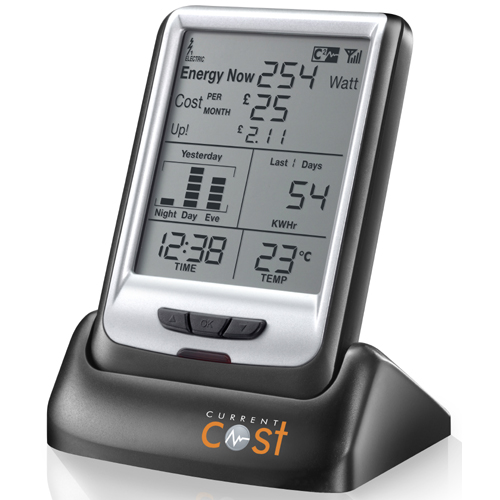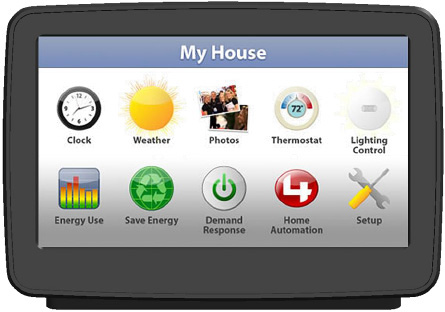Measuring your home’s energy consumption is the first step toward finding ways to decrease it. While almost every residence has an electric meter, it usually only shows total household energy (kWh) consumed, although some include instantaneous power being used (kW). And the meter is usually placed where it is convenient for the utility—not for you—to read. But conservation-minded homeowners and renters can choose from several products that measure and record electricity consumption to reveal the energy hogs. The information is shown on a convenient counter top display or remotely on a smartphone or a computer screen.
If you want to use energy data to help reduce usage or convince other household members to adopt energy-saving behaviors, an energy monitoring system is for you. Or maybe you want to see how large a backup generator you need for utility outages, or how large a solar-electric system you need for your home. Maybe you just want to identify the biggest electricity loads in your household. If you already have a PV or wind system, you might need to monitor the on-site generation.
The Basics
A typical home energy monitoring system includes sensors, a data gateway, and a display to receive and view the information. Standard information includes energy consumption in kilowatt-hours (kWh) and power draw in kilowatts (kW). Often, monitors include the cost of the electricity consumed, and some allow programming with time-of-use rates.
Monitors require sensors at each point of measurement. Current transducers (CTs) and pulse sensors are most common. CTs are available in split-core or solid-core varieties. Split-core CTs make it easier to install in existing electrical installations, since you can open up the “donut,” and then close it around the wire. Note that CTs are typically not interchangeable between different systems.
A magnetic field is created as the current in the wire flows. When that magnetic field moves through the coil of the CT, it generates voltage proportional to the current flow. This voltage is measured by the electronics and converted into an amperage reading. At the same time, the voltage in the circuit is measured directly, and simple multiplication results in kW. Include the elapsed time, and kWh are computed. The other sensor type—pulse—counts the electronic pulses made by the utility meter as it counts units. Many utility meters for electricity, gas, and water are pulse meters. Simple pulse sensors are not sophisticated enough to determine whether the energy flow is incoming from consumption or outgoing from a home source, like a PV system.
Some meters gather more data from the sensors than others, updating readings every second compared to every 30 seconds. The way in which the data is used in calculating kWh or instantaneous kW will also influence the meter’s accuracy.
The sensors are hard-wired or communicate wirelessly through data loggers or transmitters that, in turn, send data to a local display. Some systems do not need or do not use a separate display. These transmitters are connected to the router so they can communicate within a local area network (LAN) and/or through third-party servers over the Internet. Several transmitters and gateways require a power supply and consume from 3 to 10 W. Most monitors allow information to be downloaded into a spreadsheet for further analysis.
Subscribe to:
Post Comments (Atom)




No comments:
Post a Comment